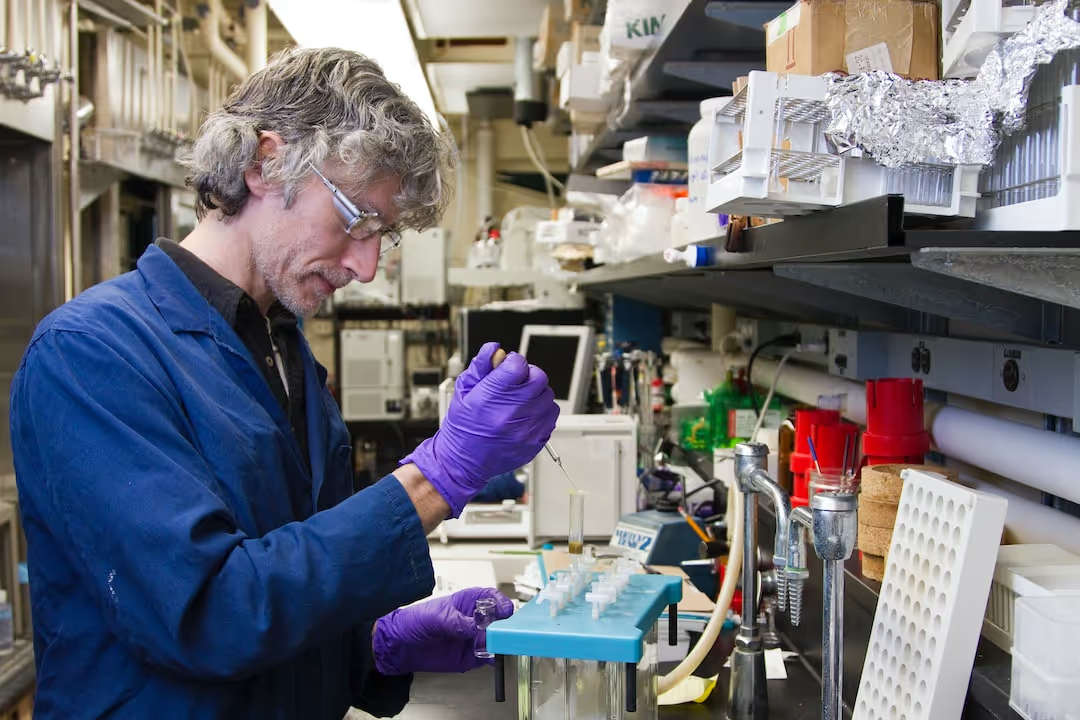
Project Management Tools for R&D: The Essential Software Stack for Research-Driven Teams in 2026


Clinical science research and development is an ever-evolving field. With the rise of technology, organizations are able to make breakthroughs faster than ever before – but this also means new challenges arise as well.
In this blog post series, we’ll explore how R&D teams can leverage technology for effective clinical science research and development, strategies to overcome common obstacles in the process, and a look into what the future may hold for clinical science R&D efforts.
Join us on our journey through clinical science research and development!
Table of Contents
What is Clinical Science Research and Development?
Benefits of Clinical Science Research And Development
Challenges of Clinical Science Research And Development
Leveraging Technology for Clinical Science R&D
Best Practices for Effective Clinical Science R&D
Strategies to Overcome Common Challenges in Clinical Science R&D
The Future of Clinical Science R&D
Clinical Science Research and Development (R&D) is the process of creating new medical treatments, diagnostics, and devices to improve patient care. It involves the application of scientific principles for the purpose of developing new or improved products or services related to healthcare. This includes:
The primary benefit associated with clinical science R&D is its potential to provide better patient outcomes through improved treatments and technologies.
It can also lead to cost savings due to more efficient use of resources in both diagnosis and treatment processes.
Finally, it can create economic benefits through job creation in areas such as pharmaceutical manufacturing or biotechnology research.
Researchers in this field face a major challenge navigating complex regulations surrounding drug approval processes, which can significantly delay product launch timelines.
Additionally, access and availability of quality data sources needed for conducting meaningful research and analytics may impede progress toward desired goals.
Finally, financial constraints often limit investments made into projects, sometimes resulting in project abandonment altogether.
Key Takeaway: Clinical Science research and development is an important part of the innovation process, providing teams with the data needed to create meaningful solutions. Cypris can help make this process easier by centralizing data sources into one platform for faster time to insights.
Leveraging technology for clinical science R&D is essential to ensure that teams are able to effectively and efficiently develop innovative solutions.
Automation can help streamline processes, reduce costs, and improve accuracy. Data analysis tools allow researchers to quickly identify trends in data sets, while AI-powered solutions enable more accurate predictions of outcomes.
Automation in clinical science R&D helps automate tedious tasks such as data entry or document management so that teams can focus on the research itself. Automated systems also provide greater accuracy than manual processes by eliminating human error.
Additionally, automation reduces costs associated with labor-intensive tasks and increases efficiency by allowing teams to complete projects faster.
Data analysis tools are critical for uncovering insights from large datasets quickly and accurately. These tools allow researchers to visualize data points, identify correlations between variables, and make informed decisions based on their findings. By leveraging these technologies, teams can gain a better understanding of their research results without spending time manually analyzing each dataset individually.
AI-powered solutions offer an even deeper level of insight into clinical science R&D projects. AI algorithms are able to detect patterns in complex datasets which may not be visible through manual inspection alone. This allows researchers to make more accurate predictions about potential outcomes from experiments or treatments before they occur in real-life scenarios.
Furthermore, AI-based models can be used for drug discovery or disease diagnosis applications where the speed of decision-making is critical.
Finally, AI has been shown to be effective at predicting future trends within certain industries which could prove beneficial when it comes time for commercialization efforts. Being able to anticipate customer demands ahead of time could give companies a competitive edge over those who do not leverage these technologies properly.

(Source)
R&D and innovation teams must have clear goals and objectives in order to be successful. Establishing these goals should involve a thorough understanding of the project’s scope, timeline, budget, resources needed, and desired outcomes.
Additionally, it is important to ensure that all team members are on the same page when it comes to expectations for success.
Utilizing the right resources and tools can help R&D teams achieve their objectives more efficiently. For example, Cypris provides an integrated platform that centralizes data sources into one location so teams can access information quickly and easily.
Developing an agile process model allows R&D teams to adjust as needed based on feedback from stakeholders or changes in technology or market conditions. This type of flexibility enables them to remain competitive while still meeting their goals within a reasonable timeframe.
R&D and innovation teams: don’t let your goals get lost in the shuffle! Utilize Cypris to centralize data sources, develop an agile process model, and achieve success faster than ever before. #ResearchAndDevelopment #Innovation #Cypris Click To Tweet
Managing complexity with simplicity is a key strategy for overcoming common challenges in clinical science R&D. By breaking down complex tasks into smaller, more manageable pieces and focusing on one task at a time, teams can reduce the amount of effort required to complete projects while still achieving desired outcomes.
Additionally, utilizing tools such as Cypris that provide centralized data sources and automated processes can help streamline workflows and simplify project management.
Leveraging interdisciplinary teams to solve problems quickly and efficiently is another important strategy for overcoming common challenges in clinical science R&D. By bringing together experts from different fields – such as biology, chemistry, engineering, etc. – teams are able to identify potential solutions faster than if they were working alone.
Furthermore, by combining their knowledge base and expertise, each team member brings unique perspectives that can lead to innovative ideas which may not have been considered otherwise.
Identifying opportunities to streamline processes is an essential part of managing any research project effectively. This includes looking for ways to automate repetitive tasks or eliminate unnecessary steps from the workflow, so researchers can focus their efforts on areas where it will make the most impactful difference.
Utilizing platforms like Cypris makes this process easier by providing access to powerful analytics tools that allow users to quickly analyze data sets and uncover insights without having to manually comb through large amounts of information themselves
Don’t let complex clinical science R&D projects bog you down! Break it into smaller pieces, utilize interdisciplinary teams, and use tools like Cypris to simplify the process. #ClinicalScienceRnD #Cypris Click To Tweet
The future of clinical science R&D is bright, with advances in automation, AI, and machine learning leading the way.
Automation has already revolutionized the way clinical research is conducted, allowing for faster data collection and analysis.
AI-powered solutions are now being used to automate complex tasks such as drug discovery and development. These technologies have enabled researchers to quickly identify new potential treatments and drugs that could benefit patients around the world.
Increasing accessibility to data sources is also helping drive innovation in this field. With access to more information than ever before, researchers can better understand how diseases develop, progress, and respond to treatment options. This increased understanding allows them to make informed decisions about which therapies should be pursued further or abandoned altogether.
Improved collaboration across teams has also been made possible by technology advancements. With remote working capabilities now commonplace in many organizations, it’s easier than ever for scientists from different disciplines to work together on projects without having to physically meet up or travel long distances.
Machine learning algorithms are becoming increasingly important in clinical science R&D. They can be used for predictive analytics as well as uncovering patterns within large datasets that may not be noticed by humans alone.
Cloud computing provides a secure platform where sensitive patient data can be stored securely while still being accessible remotely, making it easier for scientists around the world to collaborate on projects without worrying about security breaches.
With the right tools and resources in place, teams can make significant progress toward achieving their R&D goals. Cypris provides a platform for clinical science research and development teams to centralize data sources into one comprehensive system. By providing rapid time to insights, Cypris helps teams unlock the potential of clinical science research and development faster than ever before.
Are you looking for a way to accelerate your clinical science research and development? Cypris is the perfect platform for R&D and innovation teams. With our easy-to-use interface, powerful data sources, and rapid time to insights, you can quickly gain meaningful results from your research efforts.
Join us today as we revolutionize the future of medical discovery!